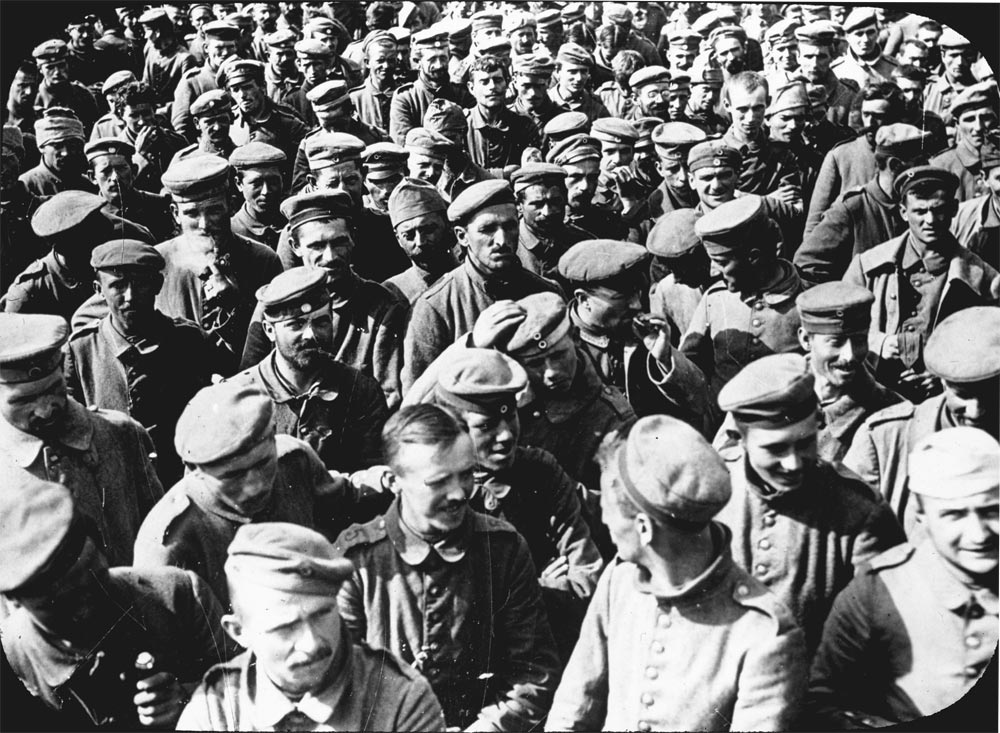MB367/149011,Victoria League of New Zealand Records, German prisoners captured during the Battle of Theipval, 1916, being held at Martinpuich (Lt. Ernest Brooks; Martinpuich, France; September 1916).

German prisoners captured during the Battle of Theipval

MB367/149011,Victoria League of New Zealand Records, German prisoners captured during the Battle of Theipval, 1916, being held at Martinpuich (Lt. Ernest Brooks; Martinpuich, France; September 1916).
Just as images of imperial troops were useful in depicting imperial strength, images of German prisoners also had significant propaganda worth within the British Empire.
This photograph, by British official photographer Lt. Ernest Brooks, of a group of German prisoners captured during the Battle of Thiepval, September 1916, indicates the ways in which official photographers visually represented Allied progress. The static nature of the First World War meant that physical gains were difficult to represent visually. Therefore, photographers often had to find other ways of depicting Allied success. In much the same way that photographs of large munitions stockpiles represented British strength, photographs of German prisoners presented a positive image of Allied progress. The scale of this image is important, as the manner in which the prisoners are photographed emphasises, and perhaps exaggerates, the number of prisoners captured at Thiepval. However, such images were used to show more than specific gains in any given battle, and could also promote wider propaganda messages. The diversity of emotion in this photograph indicates the moral usefulness of depicting German prisoners. British propagandists used the range of emotions of captured German soldiers to their advantage. Whether a soldier looked despondent, or looked happy to be captured, both were used to suggest the deterioration of German morale, and the German war effort. Contented German soldiers also reflected the importance of morality in the British justification for war, as the Britain’s belief in its moral justification and superiority informed its decision to go to war, and its wartime propaganda. Presenting seemingly happy German soldiers allowed British propagandists to represent their moral treatment of German prisoners, showing fairness to the enemy, which contrasted against atrocity propaganda of tales of German cruelty to British prisoners.